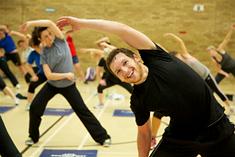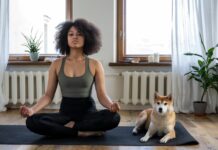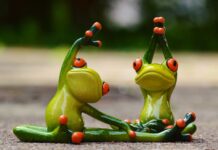As people begin to get older, a fall, once nothing more than an embarrassing experience, can have serious life-altering consequences. Luckily you can start preparing your body today to prevent a serious fall that may greatly affect your life.
Certified Personal Trainer Shane McLean of Breakingmuscle.com lists the best fall prevention exercises to keep you injury free and on your feet.
What are the risks of falling?
Usually, falling over hurts your pride more than anything. However, for older folks, one in five falls results in a serious injury. The most common of these are head injuries and hip fractures. Most traumatic brain injuries are the result of a fall. Falls are also an expensive burden for the healthcare system, with the total medical costs for falls in 2015 topping $50 billion, with Medicare and Medicaid shouldering 75% of the costs.
95% of hip fractures are also caused by falls. An even more startling fact is that the loss in mobility makes it two-three times more likely that the older adult who suffered the fall meets their maker.
This means that working to prevent falls saves you more than just embarrassment. It could save your life.
Working on balance
Balance is essential for preventing falls. But, what gives us balance? Our bodies use three systems to keep us balanced whilst still (static) or whilst moving (dynamic). These are:
- The Vestibular system
- The Musculoskeletal system
- The Neuromuscular system
The vestibular system lies inside the inner ear and is responsible for providing the brain with information about; motion, equilibrium, and spatial awareness.
The musculoskeletal system includes your; skin, muscles, ligaments, and tendons. This system sends sensory information to the brain, helping it determine your body’s position and any changes to your environment.
The neuromuscular system takes information from the eyes and the other two systems and transports it to the brain. The brain will then use the central and peripheral nervous system to respond to this information.
Shane McLean has provided his top exercise picks to help improve balance and prevent falls that are simple and easy to do with minimal equipment.
- Squats
People perform squat-like movements every day without even realizing it. Every time you sit and stand up from a chair or bend your knees to pick something up, you are performing some kind of squat.
So, performing a squat as an exercise while accentuating the proper biomechanics will develop leg muscles and can even help improve back pain. This functional exercise will improve your ability to bend your knees and squat for your everyday activities.
Squatting can also help build a solid, strong foundation helping to improve mobility and prevent falls. In particular, the squat exercise builds muscle in the quads, hamstrings, and glutes. It also helps build core muscles which make turning, bending, and standing easier whilst also improving posture.
- Half And Tall Kneeling Positions
Practicing these positions is an excellent way of improving core stability. By kneeling instead of standing, you allow yourself to practice postures without the threat of falling from height. The aim is to build the stabilizer muscles that help stop you from being shaky and unbalanced when standing and moving.
The tall kneeling and half kneeling posture is great for activating your core and glute muscles – both essential for stability and good posture. Both these postures are excellent starting exercises for further progression as well. You can hold the positions for one to two minutes each. Then, you can add in resistance such as lat pulldowns or shoulder press variations when they become too easy.
- Farmers carries
This is another functional exercise that mimics the daily functions of everyday movements. For example, when walking home with bags of shopping in each hand, you are essentially doing farmer’s carries.
In particular, this exercise improves:
- Posture
- Deep breathing
- Shoulder stability
- Balance
- Grip strength
- Head nods
The vestibular system is negatively affected if you struggle to hold your head up properly in the correct position. So, you need to strengthen your neck to allow your head to remain upright and your balance systems to work in harmony.
Head nods improve posture, reduce neck compression, and reduce pressure on the cervical nerves.
Head nods are an easy exercise that anyone can add to their warm-up routine with just 10 or 15 reps.
- Ankle mobility exercises
The health of your ankles is crucially important in maintaining a healthy posture, balance, and mobility. Ankles sense different environmental changes like elevation or uneven surfaces and transfer this information back to the brain via the nervous system. Then your brain can adapt to the changes via a muscular response.
When you have poor ankle mobility, there is poor signaling to the brain and poor response as a consequence. If your muscular response does not properly adapt to the environmental changes, you can lose balance and potentially fall.
You could incorporate these into your warm-up routine by performing ankle dorsiflexion whilst foam rolling your calves, for example. Or, you could perform elevated calf raises as a strength builder.
Further information can be found at breakingmuscle.com.
Help keep news FREE for our readers
Supporting your local community newspaper/online news outlet is crucial now more than ever. If you believe in independent journalism, then consider making a valuable contribution by making a one-time or monthly donation. We operate in rural areas where providing unbiased news can be challenging. Read More About Supporting The West Wales Chronicle
























